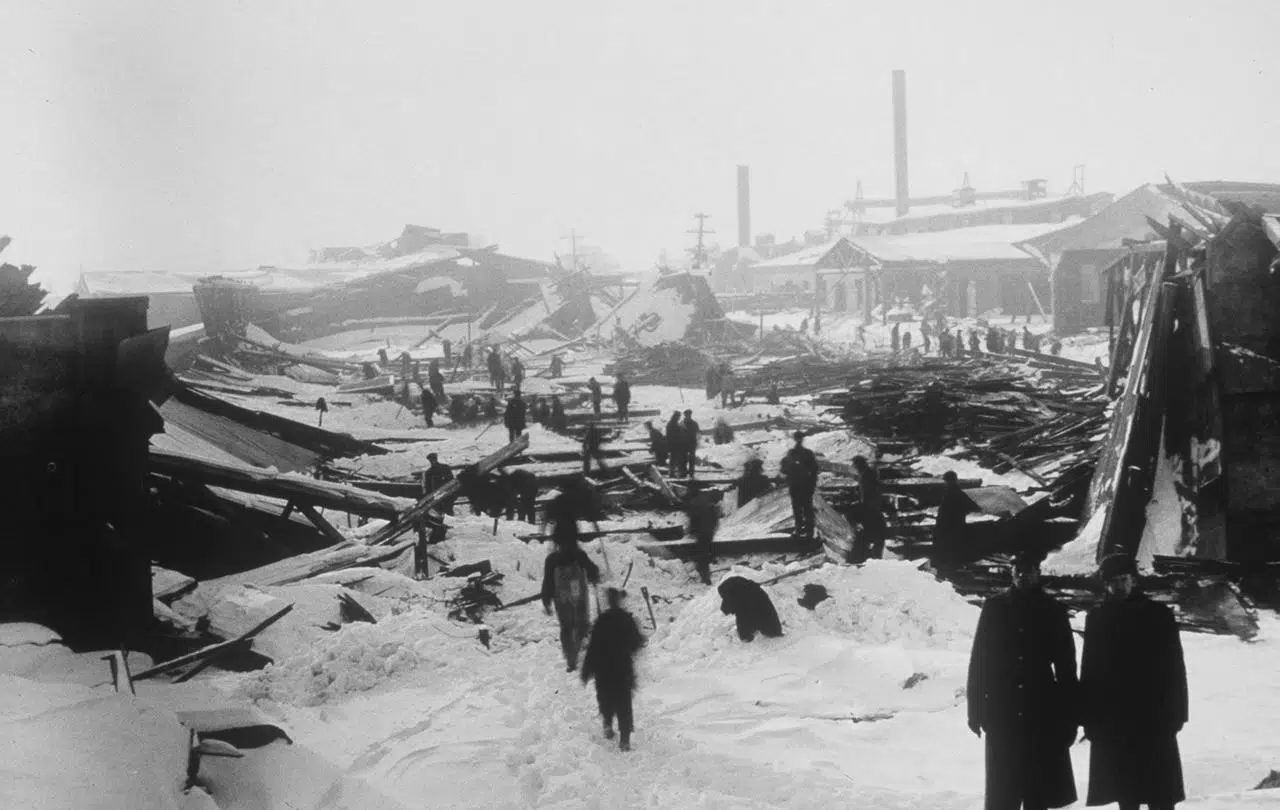
N.S. capital to commemorate catastrophic Halifax Explosion 100 years ago
HALIFAX — Sombre ceremonies will be held across Halifax on Wednesday to mark 100 years since the port city was devastated by a wartime blast that killed or injured about 11,000 people.
The catastrophe, known as the Halifax Explosion, remains the worst human-made disaster in Canadian history.
Reflecting on the tragedy, York University professor Jack Rozdilsky says it’s important to remember what happened that terrible day, even though it may seem like it was too long ago to learn any lessons.
“Accidents can happen and accidents will happen, despite our new technology and modifications of ways of doing things,” says the professor, an expert in emergency and disaster planning. “We still engage in activities that represent a danger to us.”
